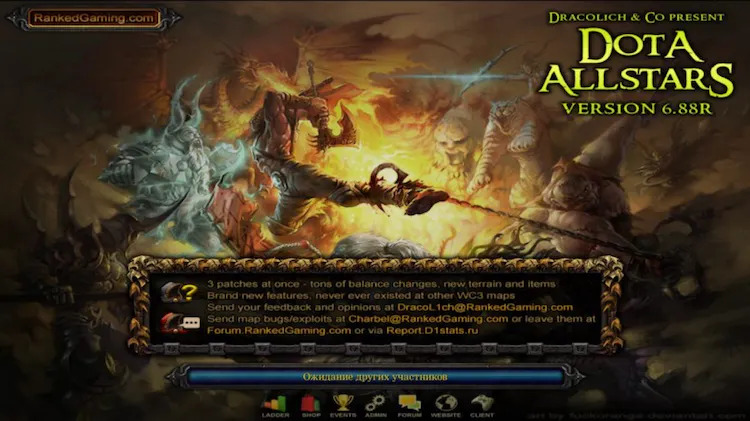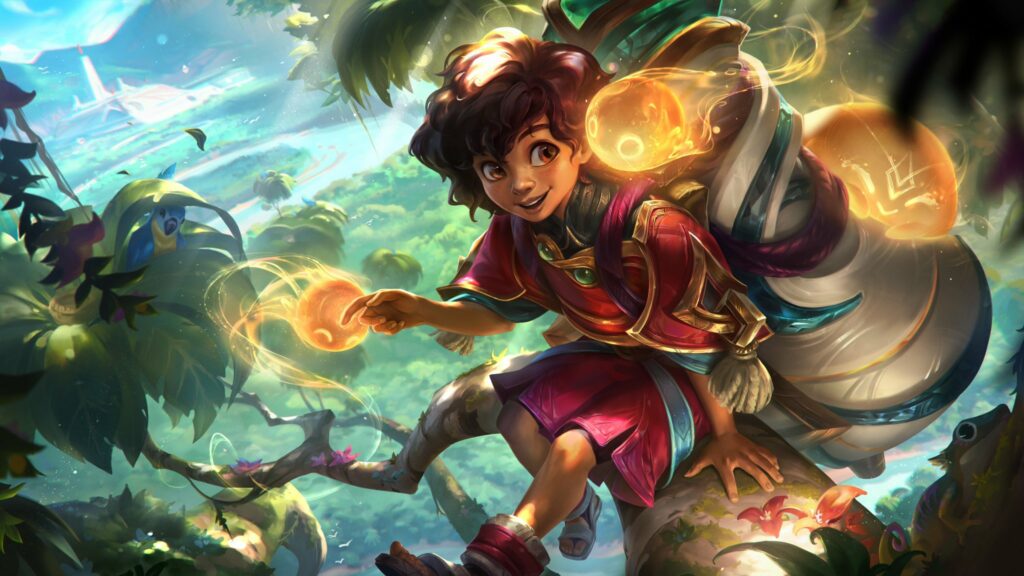Here’s a brief overview of one of the most popular esports titles across the world, League of Legends. Here’s how Riot Games took this MOBA to new heights.
Ever wonder when League of Legends came out, how big it is, how many champions it has or just what is this hugely popular MOBA? This overview will prepare you for the rift, whether you’re a beginner or a seasoned veteran who is interested in the history of your beloved game.
What is LoL, Riot’s Hugely Popular MOBA?
Developed by Riot Games, League of Legends is one of the world’s most popular online game. This 5v5 MOBA genre stands for “Multiplayer Online Battle Arena,” although the game is also considered an RTS (real-time strategy). League of Legends standard mode, also known as Summoners Rift, sees two teams of five battle it out in player vs player combat. The ultimate goal for winning a match of League of Legends is to destroy the opponent's Nexus which is the final structure at the end of the enemy's base.
Across its lifespan, there has been plenty of modes in League of Legends, with many offering a more casual and entertaining experience than the gritty Summoners Rift mode. Here are the current modes that are live on the League of Legends client:
- Summoners Rift: Blind Pick, Draft Pick, Ranked Solo/Duo, and Ranked Flex
- ARAM: 5V5 mode in which players fight down a single lane (bridge) with randomly selected champions
- TFT: Riot's Autobattler game is separate from traditional League of Legends and is part of Riot's larger portfolio in the world of League of Legends
Over the years, League of Legends has added and removed different game modes, including some fan favorites. Here is every mode that has either been scrapped or is a limited-time-mode:
- Ascension: 2014 - 2016
- Dominion: 2011 - 2016
- Twisted Treeline (3v3): 2009 - 2019
- U.R.F: Rotating Game Mode
- ARURF: Rotating Game Mode
- One for All: Rotating Game Mode
But despite their attractive differences, almost every mode runs by the same objectives:
Slay minions, jungle creatures, and the enemy opponents to gather both gold and XP (experience points) to level up skills. Craft items to destroy enemy towers until you get to the ultimate objective. You must destroy the enemy Nexus.
When was LoL released?
League of Legends was fully released in North America on October 27, 2009. Its launch happened one year and ten days after it was first announced (October 7, 2008) with the name “League of Legends: Clash of Fates” but Riot took out Clash of Fates later.
When the closed-beta testing began in April of 2009, it had just seventeen champions available to play. They planned to release 20 champions in total but instead doubled for the full version. Its mobile version (Wild Rift) was released in North America on March 29 and averages thirteen million players globally over a thirty-day span. It has come a long way since then. League of Legends has morphed many times after Steve 'Guinsoo' Feak created Defense of the Ancients Allstars over a decade ago.
Steve Feak/Guinsoo and Dota Allstars

Feak added some extra content to Eul’s original DotA map based on Warcraft III: Reign Of Chaos. His contribution to its development lasted until version 6.01 came out when Riot Games hired him. Icefrog, Dota 2’s current developer, took his place.
Steve Feak was placed as the Design Lead for League of Legends where a weapon’s name was inspired by his work (Rageblade Guinsoo). Riot Games and League of Legends started from the bottom, without much hype or budget.
Did the creation of Steve Feak grow enough to be considered a success?
How Many People Play League of Legends?
According to Activeplayer, League of Legends averages 152 million players in a thirty-day period. Along with that, LoL is one of the most popular games on the streaming platform Twitch, with 116,019,883 hours watched over a thirty-day period.
As of May 2023, League of Legends ranks second among the most popular games on Twitch with only 'Just chatting' besting the MOBA according to Twitchtracker.
But there must be some places where it is most popular, right?
Where is League of Legends Most Popular?
While the exact numbers for the East are hard to track down, according to Riftfeed, there are approximately 75 million players playing in China. Here is the rough regional distribution for League of Legends according to the article by Riftfeed.
Region | Player count |
|---|---|
| China | 75,000,000 (approximately) |
| Korea | 19,822,124 |
| Europe West | 34,830,785 |
| Europe Nordic & East | 18,428,816 |
| North America | 27,889,684 |
| Brazil | 11,488,731 |
| Turkey | 7,727,140 |
| Latin America North | 6,798,119 |
| Latin America South | 6,052,414 |
| Russia | 4,888,207 |
| Oceania | 2,746,903 |
| Japan | 1,736,489 |
When did League of Legends get popular?
While it started with a few hundred thousand players with the NA server’s release, it reached 11.5 million monthly players by 2011 when the European server was released.

Fortunately for Riot, League of Legends gained heavy popularity in recent years. Riot added new champions, skins, items, game modes, and regular patch updates to keep the game alive along with its evergrowing esports ecosystem.
Three years passed (2014) and that number multiplied by 6 (65 million active players out of 70 million registered). And it continued to skyrocket with 100 million in 2017. However, LoL saw a slight reduction to 75 million players in 2018.

Since 2019 and beyond, League of Legends has continued to grow with each year, seeing an increase in the global player base every year. The biggest jump in recent years was 117 million in 2019 to 137 million in 2020, although almost every online game saw a drastic increase in player count due to the COVID pandemic.
Coming out of the pandemic, League of Legends has continued to grow in size. 2021 saw another significant increase from 137 million to 149 million. 2022 did not match the rapid growth that the previous year saw with only a 3 million jump from 2021.
Playercount statistics are according to Headphones Addict.
When did League of Legends become an Esport?
We could say LoL esports humble beginnings happened during an era called “Pre-Worlds,” where the first tournament events were hosted in LAN format by MLG, IGN, and the ESL for North American and European teams. Here’s where teams like TSM and CLG were born.
The scene would then see the rise of the Eastern teams who at the time had to play on the North American server until their own regions received a server. Korea, who started to dominate the League of Legends esports scene got their own server in 2011.
When was the first League of Legends World Championship?

The notorious 2011’s Season One League of Legends World Championship took place in Sweden at DreamHack Summer, with eight participants competing for a $100,000 prize pool.
Viewership numbers were impressive at the time (1.69 million unique viewers and 210,000 watching the final between Fnatic and Against All Authority (2 – 1).
The image above displays what generic esports LANs looked like before the days of sports stadiums. But let’s not forget that this was considered one of the biggest esports competitions ever held in those days.
Of course, the LoL competitive scene scaled its prize pool and viewership:
Season + Year Winning Team Prize Pool Viewership | Season 2 (2012) Taipei Assassins $1 million 8 million viewers | Season 3 (2013) SK Telecom T1 $1 million 32 million viewers | Season 4 (2014) Samsung Galaxy White $1 million 27 million viewers | Season 5 (2015) SK Telecom T1 $1 million 36 million viewers | Season 6 (2016) SK Telecom T1 $2.6 million 43 million viewers | Season 7 (2017) Samsung Galaxy White $1.5 million 60 million viewers | Season 8 (2018) $2.4 million 99.6 million viewers | Season 9 (2019) FunPlus Phoenix $ 2.2 million 44 million viewers | Season 10 (2020) $ 2.2 million | Season 11 (2021) Edward Gaming $ 2.2 million | Season 12 (2022) DRX $ 2.2 million |
For a few years, independent data organization Esports Charts has been releasing the peak viewership numbers for international events. In 2020, Esports Charts lists the peak viewership numbers for the 2020 World Championship at 3.8 million. Riots'publishing puts the figure closer to 50 million. For comparison, the NFL, which is the biggest sporting league in the USA, averages around 14.8 million per game.
The Mid-Season Invitational and the World Championship are the two esports events that Riot puts on every year, opting away from the schedules of other successful esports titles in Dota and CSGO.
Instead, teams must qualify through their own regional leagues, which host their own end-of-split playoffs to determine which teams qualify for MSI and Worlds. Here’s a list of LoL’s regional leagues:
Current League Esports structure overview
League of Legends Championship Series (LCS) North America | League of Legends European Championship (LEC) Europe | League of Legends Champions Korea (LCK) South Korea | League of Legends Pro League (LPL) China | Pacific Championship Series (PCS) Taiwan, Hong Kong, Macau, and South East Asia | Vietnam Championship Series (VCS) Vietnam | Turkish Championship League (TCL) Turkey | Campeonato Brasileiro de League of Legends (CBLOL) Brazil | Liga LatinoAmérica (LLA) Latin America | League of Legends Japan League (LJL) Japan |
How Often Are Champions Added to League of Legends?
The rate at which a champion is released varies from year to year. In 2022, five champions were released which was one more 2021. So far, only one champion, Milio, has been released in 2023, with Riot evidently slowing down on the number of champions they are pushing out. At the time of writing, there are a total of 163 champions in the game.
When was the last champion added to the League of Legends?

Milio is the first and only champion that has been released in 2023 thus far. Milio is a supportive champion that uses their kit to heavily buff up ally champions. You can find out how Milio's abilities work in our ability guide here.
When is the next League of Legends patch?
The next patch is 13.11 is scheduled for June 1. Now that the 2023 Mid-Season Invitational is in the record books, Riot Games can now start planning ahead as the season comes to a close. Riot operates on a strict schedule that does not change outside of external factors. Here you can find the patch schedule for the remainder of the season.
Stay tuned to Esports.gg for the latest esports news and updates.